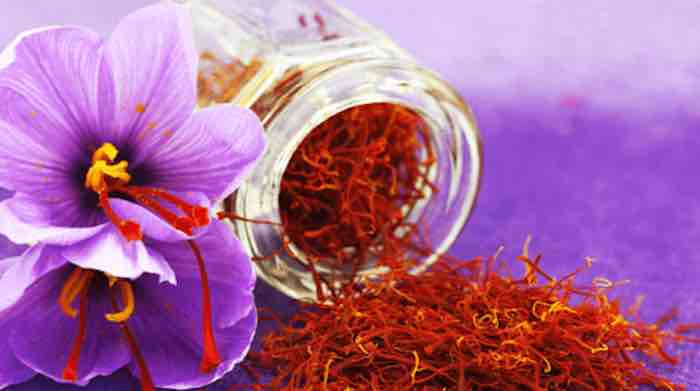By Wes Porter ——Bio and Archives--September 8, 2019
Lifestyles | CFP Comments | Reader Friendly | Subscribe | Email Us

As with many other flora, the Greek poet Homer was familiar with saffron at the opening of the first millennia B.C.:
In saffron-coloured mantles from the tides
Of Oceans rose the Morning to bright light
To Gods and men
Indeed, krokos is Greek for saffron, one of a genus of about perennial herbs arising from corms. While many species and cultivars are grown as ornamentals, only saffron, Crocus sativus, has achieved other prominence but at a considerable cost.
It is unknown as a wild plant; a sterile cultigen possibly derived from Crocus cartwightianus, wild saffron, from southern Greece. First used as a dye in the Mediterranean basin 3500 years ago, later mentioned in the Bible’s Song of Solomon, it is now the world’s most expensive – and labour-intensive – #.
By the 10th century A.D. saffron was being grown by Arab settlers in Spain. The English ’saffron’ is derived from Arabic za’faran, meaning yellow. Hence the Spanish azafrin, French and German safran and even the Japanese safuran. Only in China is there a considerable difference: fan-hung-hua.
In medieval times, it was even being grown in England, as attested by the still-existing community of Saffron Walden in Essex, England. However, the cost was attracting fake products, even cotton strands dyed with urine. As far back as the first century A.D. the Roman naturalist Pliny was warning that it was the most often adulterated commodity. By the Renaissance, Germany enacted strict laws with punishments including being burnt or buried alive, although these were later modified to hefty fines. In later Tudor times, miscreants in England were subjected to “extreme corporal punishment.” Presumably though it was the genuine # that Shakespeare wrote of The Winter’s Tale, Act IV, scene iii: “I must have saffron, to colour the warden pies . . .”
Today, while saffron is widely grown commercially in Spain, India and China where labour is relatively inexpensive, it is attracting interest from as far afield as New Zealand. Raising is relatively easy although each successive generation of cormlets forming around the mother corm move deeper and deeper. Hence, fields rarely last longer than five years before requiring replanting.
Harvesting, however, is a back-breaking process. The individual flower’s three red stigmas must be plucked and carefully dried. It takes some 210,000 dried stigmas produced by about 70,000 flowers to make a single pound of saffron. An acre of plantings may produce anywhere from eight to twelve pounds of dried saffron.
So although it is possible to grow C. saffron in the garden as far north as southwestern Ontario, commercially it is not the most attractive of crops. However, limited quantities of the corms are offered each fall by specialist retailers. Since these dry out rapidly, they should be planted as soon as received.
As many as ten corms may be required to produce enough of the # to flavour a single meal. Nevertheless, in the words of Norman Douglas, “A man who is stingy with saffron is capable of seducing his own grandmother.”
View Comments
Wes Porter is a horticultural consultant and writer based in Toronto. Wes has over 40 years of experience in both temperate and tropical horticulture from three continents.